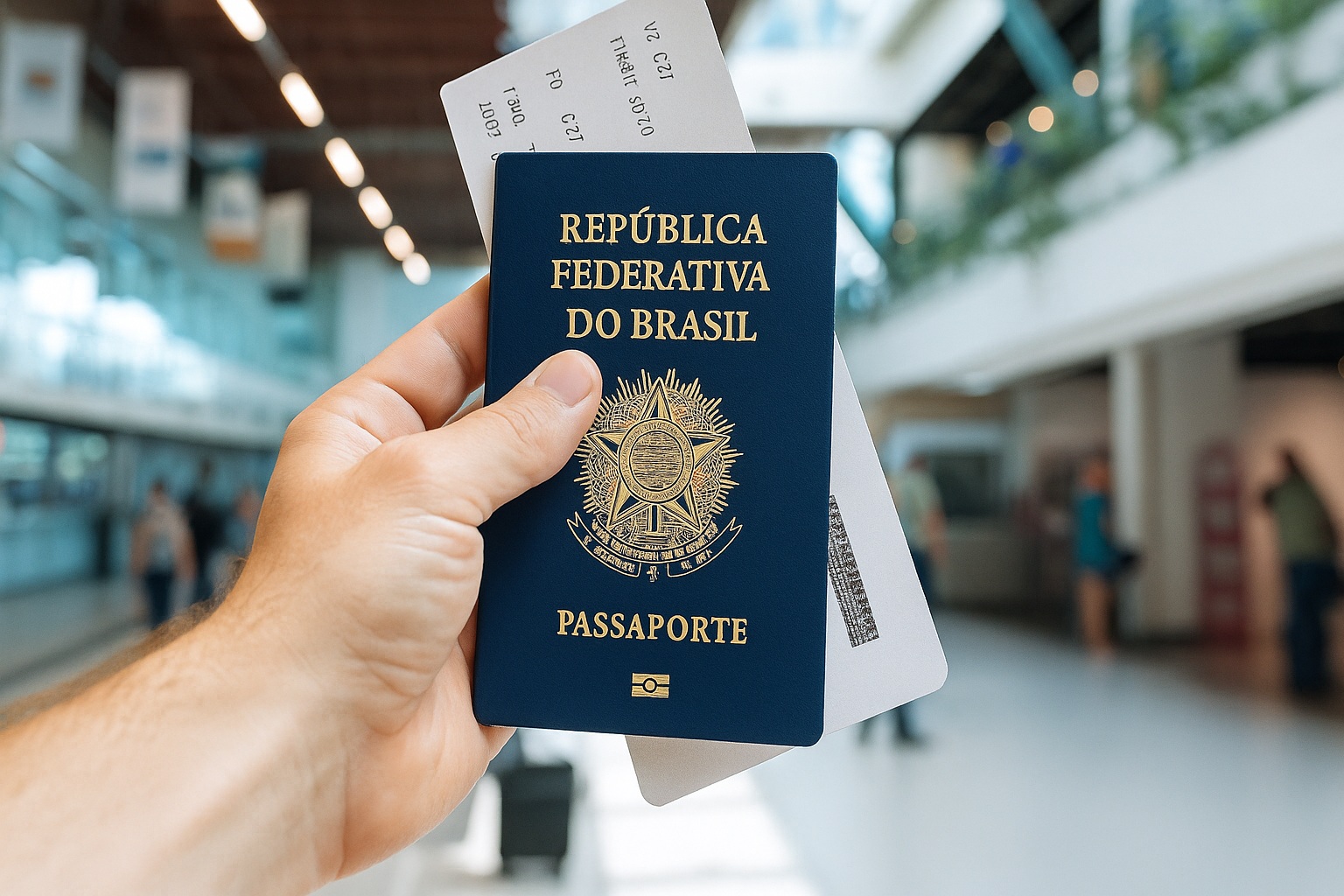When it comes to traveling or living abroad, many people worry about visas, housing and work, but forget something essential: the health in the USA. Unlike Brazil, where we have access to a wide variety of medicines at affordable prices, in the United States the health system is private, expensive and bureaucratic. A simple trip to the hospital can cost thousands of dollars if you're not prepared.
On the other hand, those who plan correctly can reduce these costs to almost zero, or even pay nothing at all for consultations, exams, emergencies and even medicines. There are insurances and health plans that cover practically everything, both for tourists and residents. Therefore, understanding how healthcare works in the USA is essential to avoid losses and inconvenience.
Whether you're a tourist on vacation in Disney or a resident starting a new phase of life in Florida, knowing about the healthcare system in the USA is the first step to ensuring well-being and safety. From common remedies with different names until insurance and health plansinformation is your best ally.
In this complete guide, you'll find out:
-
Which Brazilian medicines have equivalents in the United States;
-
What you can and can't take from Brazil;
-
Which medicines are banned on American soil (such as dipyrone);
-
How health insurance works for tourists and for residents;
-
And how much a medical emergency actually costs in an American hospital.
Read on to find out all about healthcare in the USA and how to protect yourself without any scares or unexpected expenses.
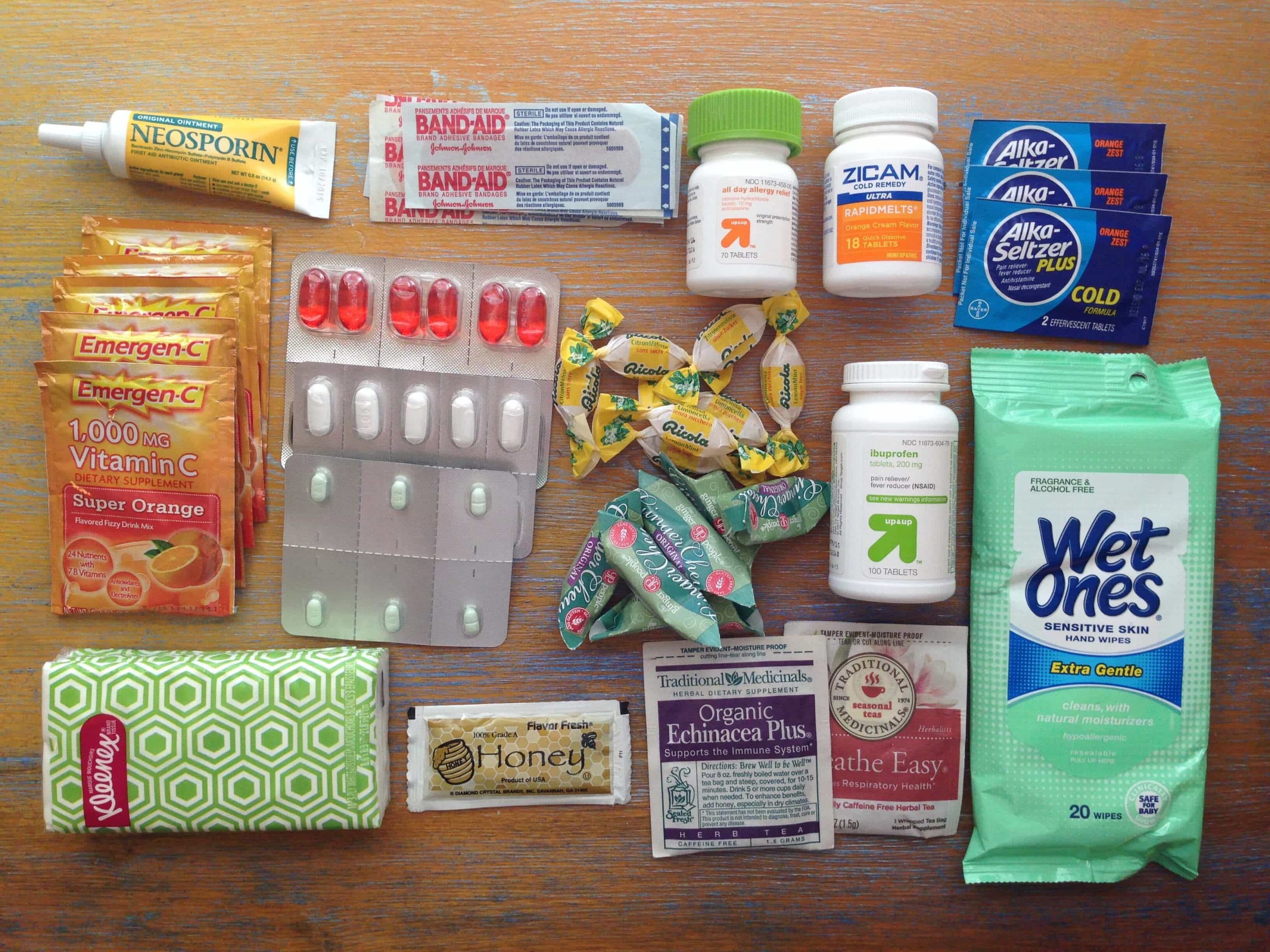
Contents
HideWhen planning your health in the USA, understanding how pharmacies and medicines work is essential if you don't want to find yourself in a tight spot. The purchasing process may seem confusing at first, but with a few tips, you'll be prepared to find what you need easily and legally.
Differences between pharmacies in the USA and Brazil
In Brazil, we're used to high street pharmacies selling practically everything, from prescription drugs to cosmetics and candies. In the United States, on the other hand pharmacies are integrated with large chainssuch as CVS, Walgreens, Rite Aid and even supermarkets like Walmart, Target and Costco.
These pharmacies offer a wide range of products, but not all medicines can be bought freely. In addition, many American pharmacies operate with automated services (such as prescription machines) and quick consultations with pharmacists, something unusual in Brazil.
OTC vs. Prescription drugs
In the US, drugs are classified in two ways:
-
OTC - Over The Counter:
These are medicines that you can buy without a prescription. Examples include Tylenol (acetaminophen), Advil (ibuprofen), antacids, mild antiallergicsitching ointments and even COVID tests. -
Prescription (prescription):
These are medicines that require a prescription issued by a licensed professional in the USA (no Brazilian prescription). This includes antibiotics, antidepressants, anxiolytics, injectable contraceptives, among others.
It's important to know this before you travel, as many medications are common in Brazil, such as simple antibiotics or stronger anti-inflammatories, are not sold freely in the United States.
Where to buy medicines in the USA
You can buy medicines in the USA in many places, from large chains to online:
-
CVS and Walgreens: The two largest pharmaceutical chains, with stores in practically every American city. They offer everything from OTC medicines to vaccination and prescription services.
-
Walmart and TargetSupermarkets with comprehensive pharmacy sections and generally more affordable prices.
-
Amazon.com: Sells a wide range of OTC medicines, vitamins and supplements, with fast delivery, ideal for those already in the USA.
-
Costco: A good option for those with membership. The chain pharmacy usually has lower prices than competitors.
-
GoodRx: It's not a store, but a app that compares prices and offers discount coupons for medicines, even on prescription. Often used by those without health insurance.
Knowing where and how to buy medicines is an essential step towards taking care of your health in the USA without overpaying or taking unnecessary risks.
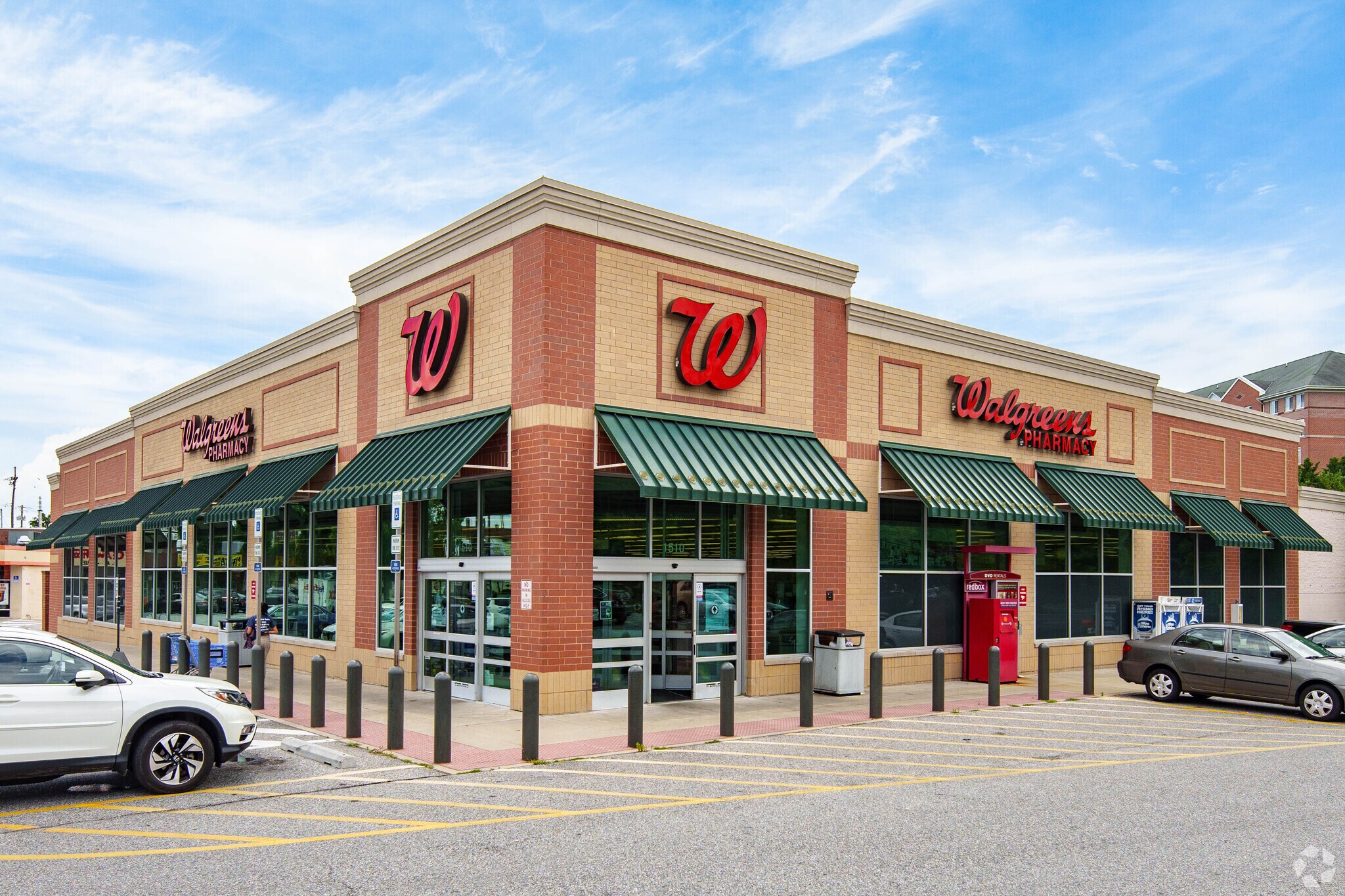
One of the most common doubts among Brazilians who are traveling or going to live abroad is: how do i know the name of the medicine i use in brazil in the united states? This is especially important for those who need to set up a basic pharmacy or deal with emergencies.
The good news is that many medicines have the same active ingredient in both countries. The bad news is that trade names change a lot, which can cause confusion and even lead to the wrong purchase.
To help you take care of your health in the USA, we've prepared a table with common medicines in Brazil and their American equivalents:
| Name in Brazil | US Name / Active Ingredient | Observations |
|---|---|---|
| Paracetamol (Tylenol) | Tylenol / Acetaminophen | OTC |
| Ibuprofen (Alivium) | Advil, Motrin / Ibuprofen | OTC |
| Dipyrone (Novalgina) | ❌ Banned in the USA | Substitute: Tylenol or Ibuprofen |
| Floratil (probiotic) | Culturelle | OTC |
| Luftal (simethicone) | Gas-X, Mylicon / Simethicone | OTC |
| Vick Pyrena | DayQuil, NyQuil, Robitussin, Delsym | OTC |
| Merthiolate | Neosporin (bacitracin + neomycin + polymyxin B) | OTC |
| Dimenhydrinate (Dramin) | Dramamine / Dimenhydrinate | OTC |
| Celestamine | Dexchlorpheniramine maleate (prescription) | May require a prescription |
| Hixizine | Hydroxyzine (prescription) | May require a prescription |
| Allegra (antiallergic) | Allegra / Fexofenadine | OTC |
| Corticoid ointment | Hydrocortisone cream 1% | OTC |
| Bengay / Cataflan Gel | Bengay, Icy Hot, Voltaren Gel (diclofenac) | OTC / prescription depending on concentration |
| Hydration serum | Pedialyte | OTC |
| Diaper rash ointment | Desitin, A+D | OTC |
| Ear remedy | Similasan | OTC |
Pay attention to trade names vs. active ingredient
In the USA, medicines are usually called by the brand name (such as Tylenol), while in Brazil we use more the names of active ingredients (such as Paracetamol). This can lead to confusion when looking for an equivalent product.
Therefore, when taking care of your health in the USA, always write down the name of the active ingredient in English. This will make it easier to find pharmacies, especially if you are using the Amazon or apps like GoodRx.
And remember: even OTC medicines should be used with caution, incorrect use can lead to side effects or interactions with other medicines.
If you're going to travel or move to the United States, it's natural to want to bring some medicines from Brazil, whether for personal use, emergency or ongoing treatment. But when it comes to health in the USAit is essential to understand that not all brazilian medicines are allowed on american soiland that there are clear rules for the transportation of any substance.
⚠️ Medicines banned in the USA: pay extra attention
A classic example is Dipyrone (Novalgina), widely used in Brazil for fever and pain, but banned in the USA due to the risk of agranulocytosis. Even with a Brazilian prescription, the substance cannot enter the country and will be confiscated, which could lead to legal sanctions or immigration obstacles.
Other substances that require special attention:
-
Clonazepam (Rivotril) - Allowed, but requires a formal prescription, ideally issued by a doctor in the USA;
-
Codeine - Controlled drugs, only entered with specific documentation;
-
Amphetamines and anorexics - Many are banned or heavily regulated;
-
Manipulated or unlabeled medicines - High risk of customs detention.
What is allowed and how to transport it safely
Fortunately, many commonly used medicines can be brought to the US, as long as you follow the guidelines set out by the company. TSA (airport security agency) and CBP (US Customs).
Here are the rules to ensure your peace of mind when taking care of yours health in the USA:
-
Take medicines in their original packagingwith a legible label and the patient's name;
-
Always carry a prescription, preferably translated into Englishwith generic name, dosage and indication;
-
Avoid taking large quantities: take only what you need for personal use during the trip;
-
Medicines for continuous use must be carried in hand luggageto avoid loss or misplacement;
-
Liquid medicines can exceed 100 mLif justified as a medical item.
If you have any doubts about a specific medicine, consult the official website of the FDA (Food and Drug Administration) or talk to your doctor before traveling.
With the right precautions, you can bring your personal pharmacy safely, within the law and ready for any emergency, without compromising your entry into the country and guaranteeing health care in the USA from day one.
When traveling to the United States, health insurance is not just a recommendation, it's practically a requirement. obligation. After all, the country has one of the most expensive healthcare systems in the world. Simple emergency care can cost thousands of dollars. So if you want to take care of your health in the USA safely and with peace of mind, travel insurance should be at the top of your list.
Difference between travel insurance and health insurance
Many people confuse the two, but it's important to understand:
-
Travel insurance with medical cover:
Suitable for tourists and temporary travelersIt covers medical emergencies, accidents, hospitalizations and repatriation. It acts as a one-off protection for the duration of the trip. -
Health insurance:
Aimed at residentsThe program is aimed at immigrants and people living legally in the USA for long periods of time. They require formal registration, contracts and fixed monthly fees. We'll talk more about them in the next section.
While health insurance is for those who live in the USA, the Travel insurance is essential for tourists, and can be contracted online, with immediate coverage.
How to claim insurance in a medical emergency
In the event of any unforeseen health problems in the USA, the process for claiming travel insurance is simple:
-
Contact your insurance company's call center (24 hours a day, usually in Portuguese);
-
Report your symptoms and wait to be directed to an accredited hospital or clinic;
-
Go there with your passport and insurance policy in hand;
-
In serious emergencies, go directly to the nearest hospital and contact your insurance company as soon as possible (some will reimburse rather than cover you directly).
How much does medical care cost in the USA? Real life example
Imagine a common situation: a renal calculus (kidney stone).
If you don't have insurance and need to go to a hospital in the USA, you can prepare yourself for a scare:
| Hospital expenses | Average cost in the USA |
|---|---|
| Emergency room consultation | US$ 1,000 to US$ 2,500 |
| Imaging tests (CT, x-ray) | US$ 3,000 to US$ 5,000 |
| Intravenous medication | US$ 500 to US$ 1,500 |
| 1-day hospitalization | US$ 5,000 to US$ 10,000 |
| Surgery (if necessary) | + from US$ 20,000 |
Total possible: up to US$ 40,000 or more, for a single kidney stone crisis.
With insurance, this value can be zeroed or drastically reduceddepending on the coverage.
Best insurance companies for Brazilians traveling to the USA
There are several cost-effective options on the market. Some of the most recommended:
-
Assist Card - Extensive plans, good service network and support in Portuguese;
-
GTA (Global Travel Assistance) - Widely used by travel agencies in Brazil;
-
Affinity / Coris - Excellent for families and longer trips;
-
SafetyWing - Ideal for digital nomads or extended stays;
-
Seguros Promo / Real Seguros - Comparators that make it easy to find the best price.
Before choosing, check:
-
Value of total medical cover (at least US$ 30,000 is recommended);
-
If there is deductible per service;
-
Cover for COVID-19 and pre-existing conditions (when necessary);
-
If it covers specific activities such as sports, pregnancy, etc.
Taking out good insurance is the most effective way of ensuring that your health in the USA is protected, without surprises or unpayable debts.
For those who decide to live in the United States, whether on a work visa, student visa, green card or other legal status, understanding how the health plans for residents is essential. After all, unlike in Brazil, there is no free public system like SUS. Healthcare in the USA depends almost exclusively on private plans, and the costs can be extremely high for those who don't have coverage.
Private plan vs. Obamacare: understand the difference
In the United States, legal residents can opt for two main types of cover:
Private health plans
They are contracted directly with insurance companies, such as Florida Blue, UnitedHealthcare, Aetnaamong others. They usually offer a wide network of hospitals, doctors and clinics. It is the preferred option for those who want more flexibility, faster service or personalized coverage.
Marketplace (Obamacare)
Created by the Affordable Care Act, the Obamacare is a public platform where citizens and legal residents can sign up for subsidized plans according to their income. It is a great alternative for those starting out in the USAespecially if the family income is within the range of eligibility for discounts.
💡 Important: tourists cannot sign up for Obamacare, only legal residents with valid status (work visa, green card, asylum, etc.).
Florida Blue: a real example of a plan in Florida
A Florida Blue is one of the best known and most accessible operators for those living in Florida. It offers plans both in the Obamacare or privately.
Advantages of Florida Blue:
-
Extensive network of doctors and hospitals;
-
Affordable plans with reduced co-payments;
-
Service in Portuguese in some agencies;
-
Support for Brazilian immigrants and families.
Example of monthly cost (healthy adult, without subsidy):
-
Bronze Plan: US$ 280 to US$ 350/month
-
Silver Plan: US$ 350 to US$ 450/month
-
Gold Plan: US$ 500 to US$ 600/month
With the Obamacare subsidiesThese figures can drop to less than US$ 50 per month, or even zero, depending on income.
Who can qualify and how to apply
You can sign up for a health plan in the USA if:
-
It has legal status (green card, work visa, refugee, etc.);
-
It's inside the open enrollment period (usually from November to January), or
-
He had a special event (change of state, loss of job, marriage, etc.).
Registration can be done in three ways:
-
Through the Healthcare.gov website (Obamacare);
-
Directly with an operatorsuch as Florida Blue;
-
With the help of an insurance agent, who usually don't charge for the service and can answer in Portuguese.
Whether you plan to live in Florida or are already here, taking care of your health in the USA starts with choosing the right plan that fits your budget and offers the ideal coverage for your reality.
One of the biggest concerns for anyone living in or traveling to the United States is: what to do in a medical emergency? The healthcare system in the USA works very differently from what we are used to in Brazil, and making the right decision can have a direct impact on both your recovery and your pocket.
Hospital (ER) or clinic (urgent care): when to go to each one
In the USA, you should evaluate well where to go for help. There are two main types of service:
ER - Emergency Room
Aimed at serious emergenciesThese include chest pain, difficulty breathing, open fractures, heavy bleeding, convulsions, etc. Hospitals are open 24 hours a day, but the cost is high and waiting times can be long for less urgent cases.
Urgent Care
Ideal for situations less seriousThese include high fever, urinary tract infection, flu, sprains, minor cuts or moderate pain. Care is usually faster and more meaningful cheaper than the hospital.
💡 Practical tip: if you're in doubt and it's not life-threatening, prefer urgent care. Many accept travel or private insurance and resolve most common cases quickly.
Average cost of medical care in the USA
Check out the average service costs without insurance (estimated values in 2025):
| Type of service | Urgent Care | Hospital (ER) |
|---|---|---|
| Simple consultation | US$ 120 - US$ 250 | US$ 800 - US$ 3.000 |
| Laboratory tests | US$ 50 - US$ 200 | US$ 500 - US$ 1.500 |
| Imaging tests (x-ray, CT) | US$ 150 - US$ 500 | US$ 2.000 - US$ 5.000 |
| Intravenous medication | US$ 100 - US$ 300 | US$ 500 - US$ 1.500 |
| Hospitalization (per day) | - | US$ 5.000 - US$ 15.000 |
These figures underline why healthcare in the US requires planning. A simple fall or pain crisis can generate a debt of thousands of dollars in a matter of hours.
💡 Tips to avoid high health costs in the USA
-
Always have travel insurance (if you're a tourist) or active health insurance (if resident);
-
Carry a small personal pharmacy with basic and permitted medicines;
-
Use apps like GoodRx to compare drug prices and get coupons;
-
Keep your insurer's number saved and accessible on your cell phone;
-
If in doubt, look for urgent care instead of going straight to hospital;
-
Prefer to pay in cash (cash discount) if you don't have insurance, many urgent cares offer a cash discount.
Knowing how to act in an emergency is an essential part of being prepared to live or travel safely and health-consciously in the USA.
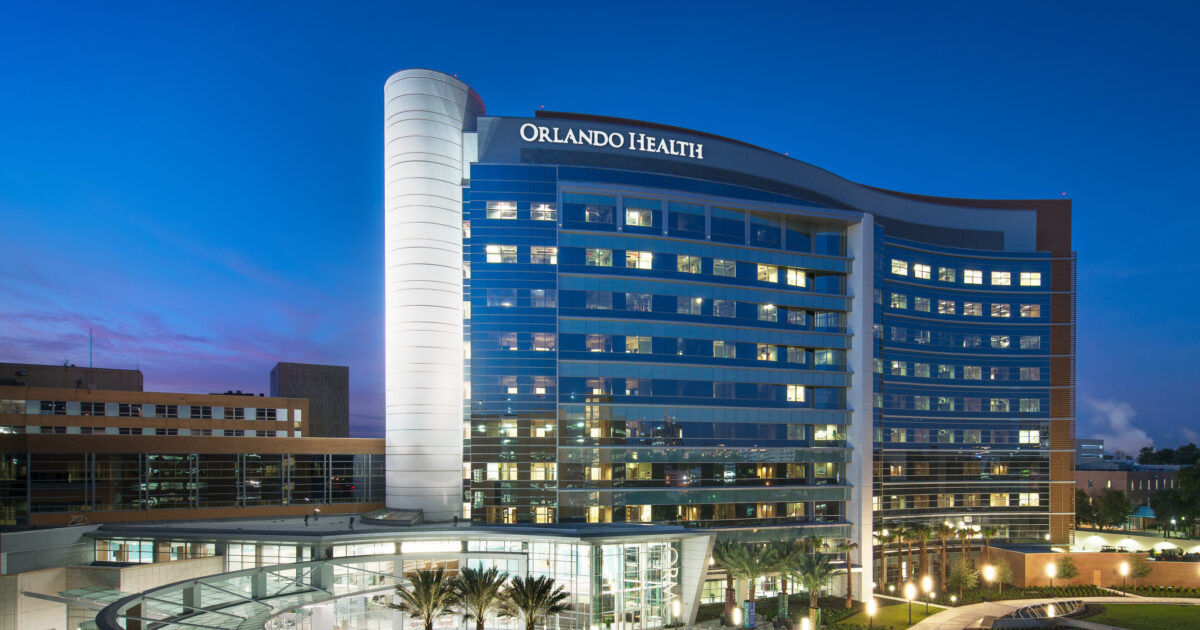
If you doesn't speak English If you feel insecure about communicating about health in another language, you're not alone. Many Brazilians face this difficulty when they need care in the United States, especially in emergency situations.
The good news is that, with the large presence of Brazilian immigrants in states such as Florida, Massachusetts, New Jersey and CaliforniaThere are clinics and doctors who offer service in Portuguese or multilingual support. This makes the routine much easier and more secure when it comes to taking care of your health in the USA.
Portuguese-speaking clinics in the USA
Here are some options recommended by Brazilian residents or tourists:
📍 VIP Walk-in Clinic - Orlando, FL
One of the options most recommended by Brazilians is the VIP Walk-in Cliniclocated in Orlando. It stands out for:
-
Medical care completely in Portuguese;
-
Accept tourists, immigrants and residents;
-
You don't need health insurance to receive care;
-
Fast service, style walk-in (no appointment necessary);
-
Staff used to dealing with common travel emergencies.
In addition to punctual service, the clinic offers a affordable annual plan for residents, which includes:
-
1 full check-up per year;
-
Medical consultations at reduced rates;
-
Basic laboratory tests at affordable prices;
-
Preventive guidance focused on the reality of living in Florida.
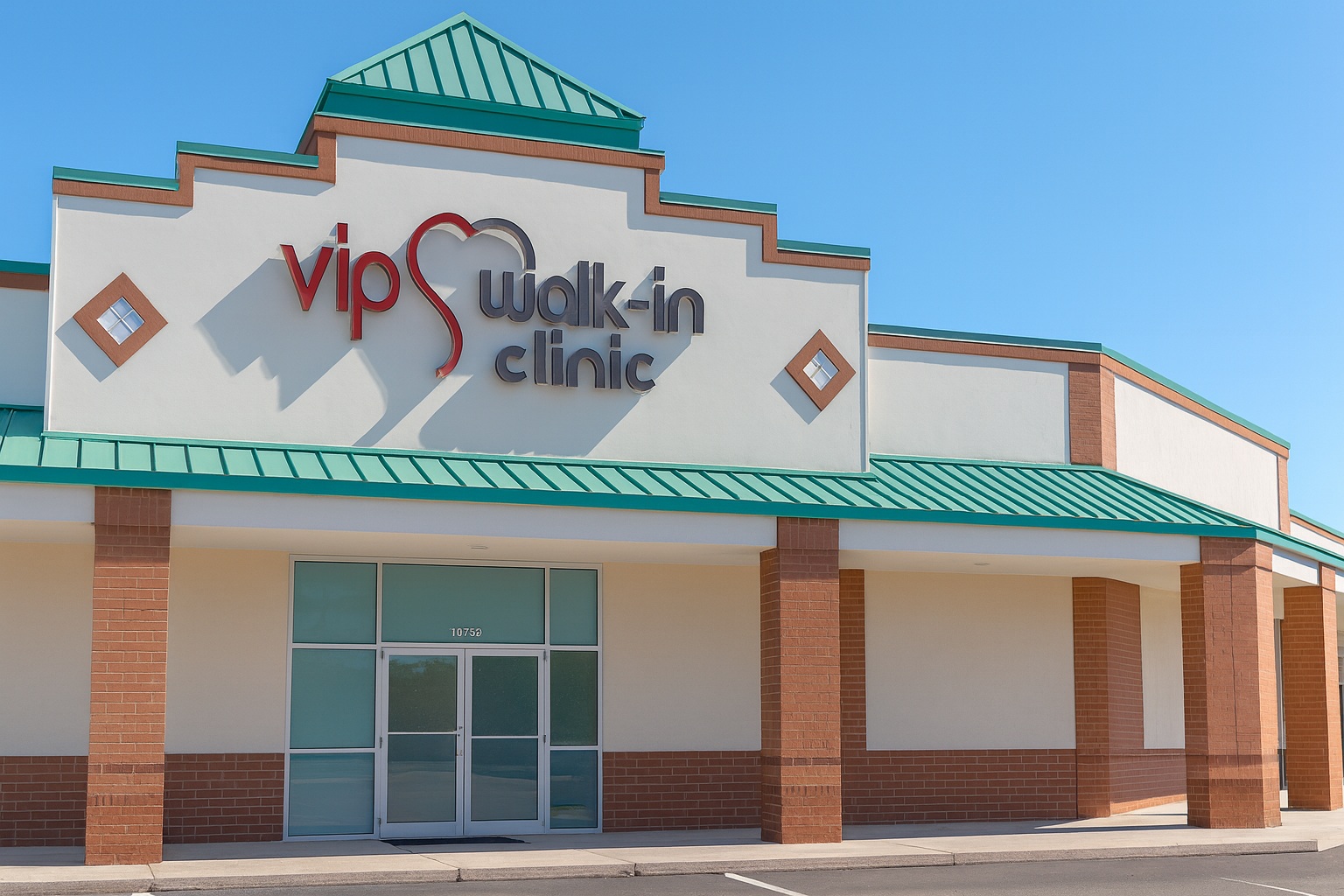
📍 Brazilian Medical Clinic - Framingham, MA
-
One of the best known among Brazilians in Massachusetts;
-
Service in Portuguese by doctors and technical staff;
-
Clinical consultations, basic exams, vaccinations and prenatal care;
-
Accepts patients without insurance.
📍 People's Medical Clinic - Pompano Beach, FL
-
Very popular with Brazilians in South Florida;
-
Consultations with general practitioners, pediatricians, gynecologists and blood tests;
-
Service in Portuguese and popular prices.
📍 HealthPoint Clinic - Newark, NJ
-
Located in an area with a high concentration of Brazilians;
-
Multilingual service with support in Portuguese;
-
Laboratory tests and monitoring for chronic diseases.
📍 International Community Clinic - San Francisco, CA
-
Community clinic with support for immigrants;
-
Service in several languages, including Portuguese on demand;
-
Social services, vaccinations, mental health and family guidance.
Tips for non-English speakers who need assistance
-
Always carry a card with your medical conditions written in English (allergies, medication, chronic diseases);
-
Use translation appsGoogle Translate (offline mode included);
-
Keep the contacts of clinics with care in Portuguese saved on your cell phone;
-
In more complex cases, call the insurance company, many offer interpreters.
Even with language barriers, it is possible to keep your health in the USA well looked after, with safety, empathy and professionals prepared to welcome immigrants and tourists.
If you are traveling to the United States as a tourist, it is highly recommended that you hire a travel insurance with medical cover. However, in simpler situations, such as a mild cold, sore throat, allergic reaction or intestinal discomfort, it may be possible to use an increasingly common feature in Brazilian health plans: the telemedicine.
Yes, even abroad, many private health plans in Brazil offer online consultations for minor emergenciesincluding for beneficiaries traveling internationally.
When telemedicine can be useful during your trip to the USA
-
Mild symptoms that don't warrant a trip to the hospital or clinic;
-
Situations in which you don't have travel insurance but want to avoid high costs for local care;
-
Questions about OTC (over the counter) medicines, i.e. those sold without a prescription in the USA;
-
Quick guidelines on whether you need to see a doctor in person.
💡 Real example:
You're in the US, you wake up with a headache, a stuffy nose and a low-grade fever. Instead of rushing to urgent care (which can cost between US$ 150 and US$ 300 without insurance), you schedule an appointment. online consultation with your health plan in Brazilyou receive safe guidance and already know which OTC medicine to buy in the American pharmacy, such as Tylenol, DayQuil, Allegra or Advil.
🛑 But beware: in more serious cases, seek local help immediately!
Telemedicine does not replace face-to-face service in situations such as:
-
Chest pain or shortness of breath;
-
Persistent fever or above 39 °C;
-
Falls, fractures or trauma;
-
Intense vomiting or blood in the stool;
-
Any life-threatening symptoms.
In such cases, it is essential to have a health insurance for tourists and go directly to hospital or urgent care.
Advantages of using your Brazilian plan's telemedicine during your trip
-
Service with Portuguese-speaking professionals;
-
Avoid high costs with American clinics;
-
Quick orientation on medicines available in the USA;
-
More security and peace of mind to take care of your health in the USAwithout jeopardizing your trip.
Before you travel, it's worth checking with your operator that the international telemedicine is included in your plan. Many already offer this benefit, and it can save you unnecessary hassle.
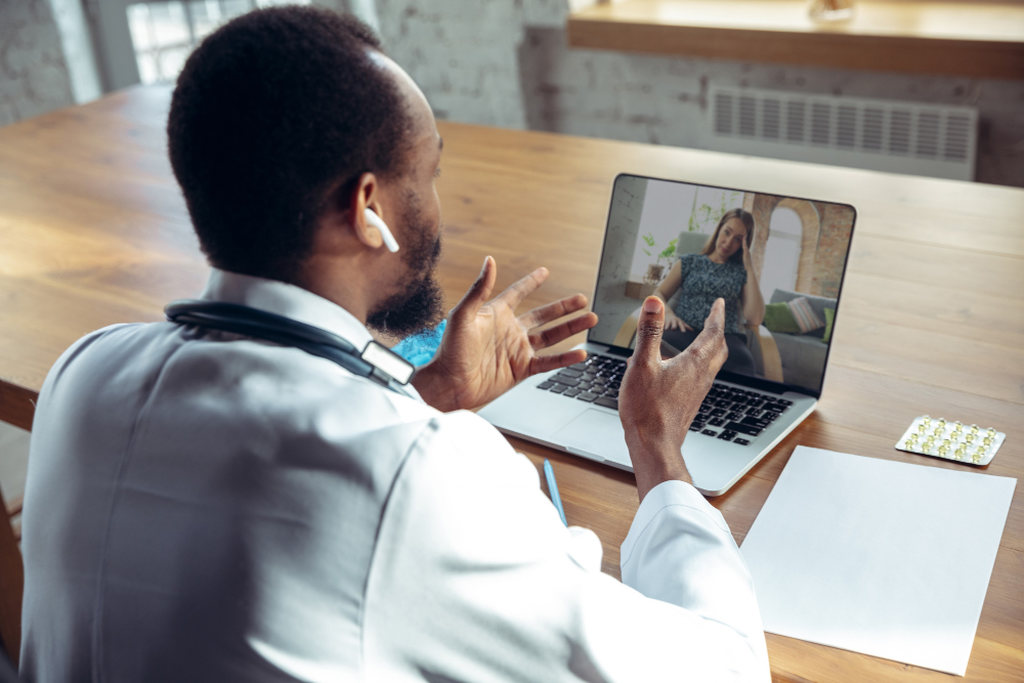
Taking care of your health in the USA goes far beyond knowing where to buy medicines or taking out insurance. Small everyday choices make all the difference in ensuring a smooth trip and avoiding unforeseen events that could ruin your vacation or compromise your routine as a resident.
1. Take precautions: pre-trip check-ups and regular care
Before embarking, make a complete check-up in Brazil, especially if you're relocating. This avoids surprises in the middle of the trip / move and allows you to travel with the right medications for a certain period, especially if you have a chronic condition.
If you already live in the USA, keeping a routine preventive examinations is essential. Clinics such as Florida Blue or VIP Walk-in Clinic offer affordable plans with annual check-ups and basic consultations, which help you save money and keep your health up to date.
2. Pharmacies with support in Portuguese (or almost)
Some pharmacies in the USA, especially in Florida and in areas with many Brazilians, have employees who speak Portuguese or are used to tourists from Brazil.
Even so, prefer to take a list of the generic names of your medicines in EnglishThis makes it much easier to find the right match.
What's more, chains such as CVS, Walgreens and Walmart offer a wide range of OTC medicines and can be accessed via apps with simultaneous translation.
3. Use technology to your advantage: useful apps
Here are some apps that can help you take care of your health in the USA:
-
GoodRx - It compares drug prices in different pharmacies and offers discount coupons;
-
Google Translate - It can be used offline to translate labels, leaflets and even conversations with pharmacists;
-
MyChart - Used by many hospitals and clinics to access results, history and schedule appointments;
-
Zocdoc - It allows you to schedule face-to-face and video appointments with doctors, dentists and specialists in the USA.
4. A balanced diet and constant hydration
It's normal to want to try new flavors during a trip, and that's part of the cultural experience. But Overdoing the American diet, which is high in fat and sugar, can make you feel unwell, and then the fun stops.
Try to keep a balanced dietThis is close to your routine in Brazil. Include fruit, salads, light proteins and avoid fast food.
And especially in the American summer, which in Florida can be extremewith temperatures above 40°C, drink plenty of water throughout the day. Dehydration is one of the main causes of ill health among tourists.
5. Don't expose yourself to unnecessary risks
Many health problems in the USA could be avoided with common sense. Some important tips:
-
Don't go hiking, climbing or water sports alonewithout preparation or a guide;
-
Never swim in unauthorized areas, even if they seem calm;
-
Do not drive under the influence of alcohol or after taking medication that causes drowsiness.;
-
Avoid getting carried away with air conditioning in rented housesSudden changes in temperature cause allergic attacks, sore throats and colds.
The combination of common sense, prevention and information is the best way to keep your physical and emotional health protected, without compromising your trip or your stay in the United States.
Traveling or living in the United States can be an incredible experienceHowever, without proper preparation, health problems can turn dreams into nightmares (and lead to huge costs).
Fortunately, with information, planning and good decisions, you can enjoy everything the country has to offer with peace of mind.
In this complete guide to healthcare in the USA, you will learn:
-
How pharmacies and medicines work;
-
What can and can't be taken from Brazil;
-
How to get good travel insurance or health insurance;
-
Where to find clinics that speak Portuguese;
-
And how to maintain your health with small attitudes in everyday life.
💡 Remember: Taking care of your health is not just a question of money, but of well-being, safety and the freedom to enjoy every moment of your journey.
Need help planning your trip or move?
-
✈️ If you're traveling on vacationtalk to the One Vacation Home, they can help you find the ideal home for your stay in Florida, with comfort, security and support in Portuguese.
-
🏡 If you are planning to move to the USAtalk to a specialist at The Florida Lounge. They will guide you through each stage of the immigration, living and adaptation process.
Taking care of your health in the USA starts before you leave. And we're here to help you with that.
Traveling or living in the United States can be an incredible experienceHowever, without proper preparation, health problems can turn dreams into nightmares (and lead to huge costs).
Fortunately, with information, planning and good decisions, you can enjoy everything the country has to offer with peace of mind.
In this complete guide to healthcare in the USA, you will learn:
-
How pharmacies and medicines work;
-
What can and can't be taken from Brazil;
-
How to get good travel insurance or health insurance;
-
Where to find clinics that speak Portuguese;
-
And how to maintain your health with small attitudes in everyday life.
💡 Remember: Taking care of your health is not just a question of money, but of well-being, safety and the freedom to enjoy every moment of your journey.
Sources used:
-
CDC - Centers for Disease Control and Prevention (US public health agency)
-
FDA - U.S. Food and Drug Administration (drug regulatory agency)
-
TSA - Transportation Security Administration (rules for traveling with medicines)
-
CBP - U.S. Customs and Border Protection (entry of items and customs control)
-
Healthcare.gov - Official portal for Obamacare and health plans in the USA
-
VIP Walk-in Clinic - Clinic in Orlando with service in Portuguese
-
Assist Card - International travel insurance with medical cover
|
Getting your Trinity Audio player ready...
|
Thalita Felisardo
Born on VHS, a Super Nintendo warrior and a lifelong theme park addict. Broadcaster, publicist and Orlando explorer by passion! I used to be Mickey's neighbor and I've made over 100 visits to Disney and Universal parks 🎢. Today I've swapped the enchanted castles for the rocky mountains of Canada, but my heart is still divided between the Northern Lights and the Magic Kingdom fireworks.



